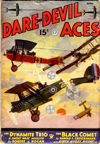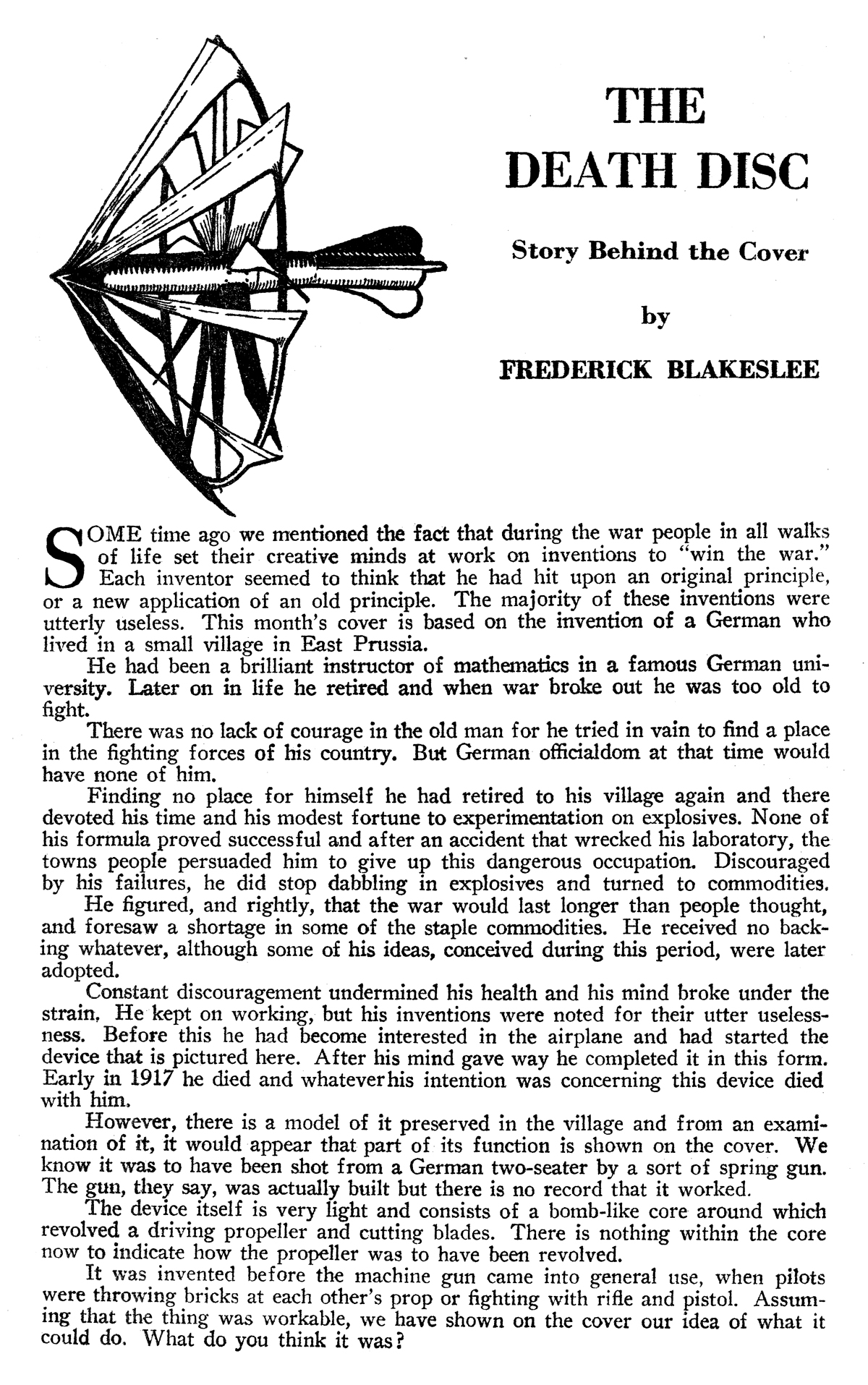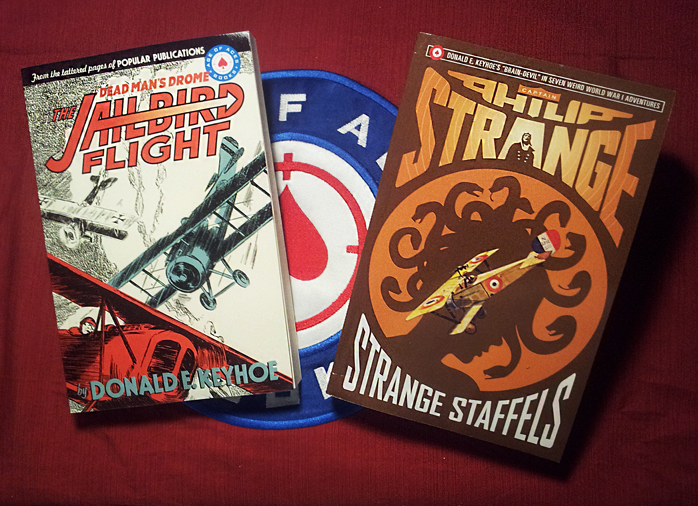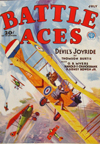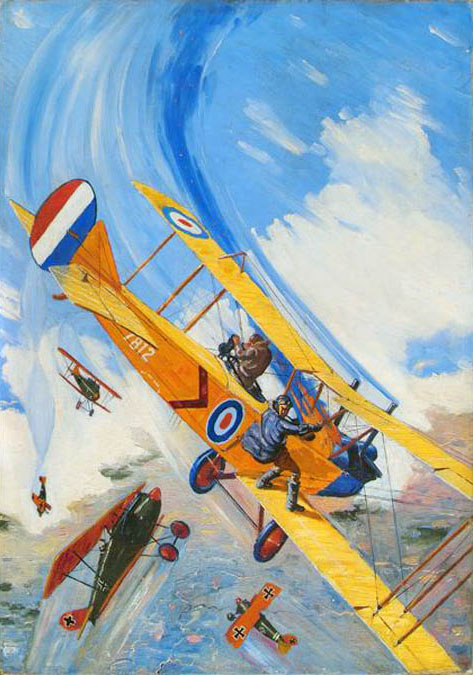Frederick Blakeslee painted the covers for Dare-Devil Aces‘ entire fourteen year run. This time Mr. Blakeslee looks into the possiblity of a giant bomb that needed to be carried aloft by two planes! From the March 1935 Dare-Devil Aces, it’s “The Dynamite Monster!”
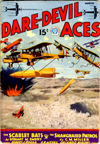 I MET Ed in the Savoy Grill in London. We had not seen each other since I had been in England three years before, so naturally we sat down, ordered drinks and spent the rainy afternoon talking over old times.
I MET Ed in the Savoy Grill in London. We had not seen each other since I had been in England three years before, so naturally we sat down, ordered drinks and spent the rainy afternoon talking over old times.
Finally. “I suppose you’re over digging up ideas, what?” he asked.
“Among other things,” I answered. “Have you any ideas around loose?” and I explained what I was after.
“Inventions is it?” he said. “Well, I don’t know of any unless—”
“Unless what?” I urged.
“Oh nothing, I was just thinking of something I heard some time ago, but you’re after authentic material, aren’t you?”
I told him I was.
“There you are,” he returned. “I can’t prove it because Bill Totling told it and someone told Bill, or so he says, and you’d have to trace the story to the original source.”
“As long as the story had a source, that’s all the proof I require, so tell it.”
“All right,” he began, “but keep this in mind, personally I think Bill was pulling our legs. It was at the annual binge of the W.B.C. (I have called it the W B C (War Birds Club) which is not its real name.—Author.) Bill said that late in 1918 we were experimenting with a bomb to drop on Berlin that was to be carried by two airplanes. The bomb was to be slung between the ships by cables. At the proper place it was to be released by electricity from one of the ships.”
“I’d like to hear more of the details,” I said,
“Why don’t you look up Bill and ask him?”
I thanked Ed and we parted. I found that Bill lived on Taviton Street which was near my hotel so that very night I called on him. He remembered the story.
“Sid Stanley told it to me,” he said to my question, “Who told it to Sid I don’t know, it’s one of those yarns that has been told to so many people that without a doubt it has been changed in the telling, but I have reason to think that it has some foundation in fact.”
“That’s all the proof I need,” I said, “perhaps you can answer some questions. What kind of ships were to be used?”
“That I don’t know. They experimented with deHavilands.”
“Why deHavilands?”
“I suppose because they were easier to handle in the take-off. The idea was to train the pilots on the lighter ship before handling the heavier planes.”
“I see. Well, how did they take off?”
“The bomb was on a carriage. The ships took up position on either side of the bomb, dragged it between them, rose in the air and gradually took up the load of the bomb lifting it off the carriage and there you are. Sid said they actually got in the air with one too,”

“The Dynamite Monster: The Story Behind The Cover” by Frederick Blakeslee
(March 1935, Dare-Devil Aces)
 series of themed stories of Donald E. Keyhoe’s Captain Philip Strange is now available! The book premiered at PulpFest this month, and although we had copies there, our printer informed us there was a problem with the files and one of the spreads needed to be tweeked and resubmitted.
series of themed stories of Donald E. Keyhoe’s Captain Philip Strange is now available! The book premiered at PulpFest this month, and although we had copies there, our printer informed us there was a problem with the files and one of the spreads needed to be tweeked and resubmitted. 




